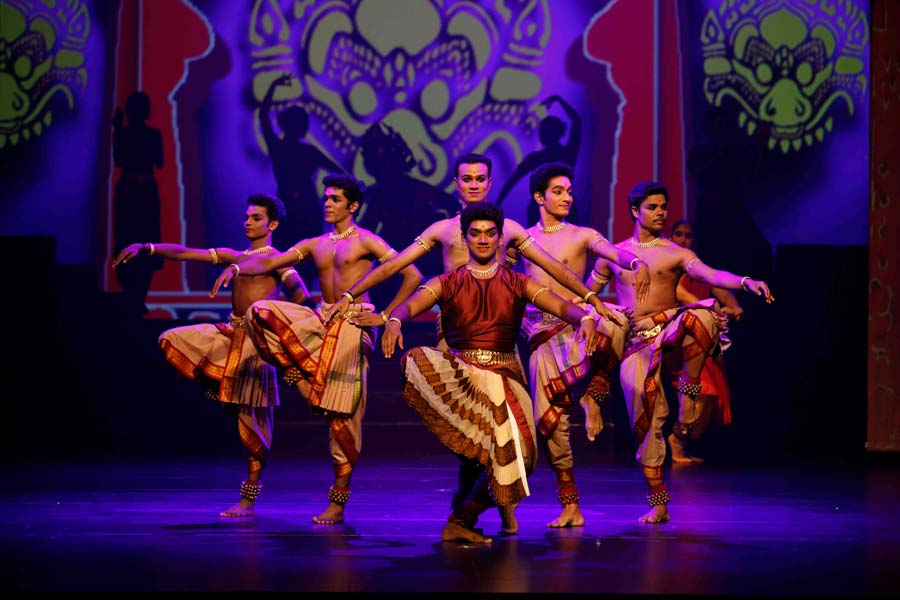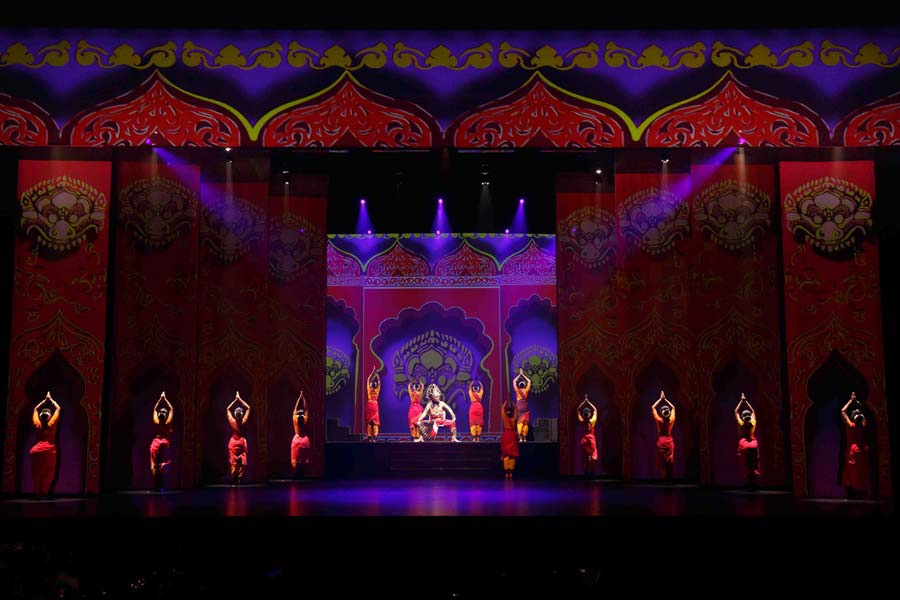Ravana is the primary antagonist in the ancient Hindu epic Ramayana where he is depicted as a Rakshasa, the Great king of Lanka. Ravana is the son of Vishrava and Kaikesi and grandson of Pulastya. Ravana, a devotee of Shiva, is depicted and described as a great scholar, a capable ruler and a maestro of playing the musical instrument – the veena He is also described as extremely powerful and has ten heads. His paramount ambition was to overpower and dominate the devas. His ten heads represent his knowledge of the six shastras and the four Vedas. In the Ramayana, Ravana kidnaps Rama’s wife Sita to exact vengeance on Rama and his brother Lakshmana for having cut off the ears and nose of his sister Shurpanakha. Ravana’s malevolent spirit was not exhausted with his death at the climax of Ramayana; rather, his legacy of evil was reiterated and revisited mythologically and theologically in many later Hindu texts. In the Bhagavata Purana, for instance, Ravana and his brother, Kumbakarna were said to be reincarnations of Jaya and Vijaya, gatekeepers at Vaikuntha, the abode of Vishnu and were cursed to be born on Earth by the Sanatah Kumara monks after refusing these holy men entry. The all-merciful Vishnu agreed that they should be punished but agreed to mitigate their curse. He asked them whether they would want to undergo seven births as devotees of Vishnu or three births as enemies of the Lord. Since they wanted to get back to Vaikuntha as soon as possible, they agreed to be born in three births as enemies of God. In their second of these births, it is said that they were born as Ravana and Kumbhakarna. Despite his villainous behavior, Ravana is still commonly acknowledged as a great character. He is considered to have possessed several important virtues, the foremost being his knowledge of the sacred books, medicines, and sorcery. Ravana was also a great devotee of Shiva, and is supposed to have composed the dance known as the Shiva Tandava Stotra, according to legend. Further, his skillful leadership is often noted; although Ravana initially took Lanka by force, he was nevertheless an effective ruler, bringing times of great prosperity to the island during his rule. With this in mind, citizens of Khonpura worship their Ravana idol during the Dussera festival, an occasion wherein worshipers everywhere else burn his effigy. He is considered to be the most revered devotee of Shiva. Images of Ravana are seen associated with Shiva at some places and he is also hailed as Ravaneshwara. Mandodari was the queen consort of Ravana, the king of Lanka, according to the Hindu epic Ramayana. The Ramayana describes Mandodari as beautiful, pious, and righteous. She is extolled as one of the Panchakanya (“Five Girls”), the recital of whose names is believed to dispel sin. Mandodari was the daughter of Mayasura, the King of the Asuras (demons), and the apsara (celestial nymphs) Hema. Mandodari bears three sons: Meghanada (Indrajit), Atikaya, and Akshayakumara. According to some Ramayana adaptations, Mandodari is also the mother of Rama’s wife Sita, who is infamously kidnapped by Ravana. Despite her husband’s faults, Mandodari loves him and advises him to follow the path of righteousness. Mandodari repeatedly advises Ravana to return Sita to Rama, but her advice falls on deaf ears. Her love and loyalty to Ravana are praised in the Ramayana.











